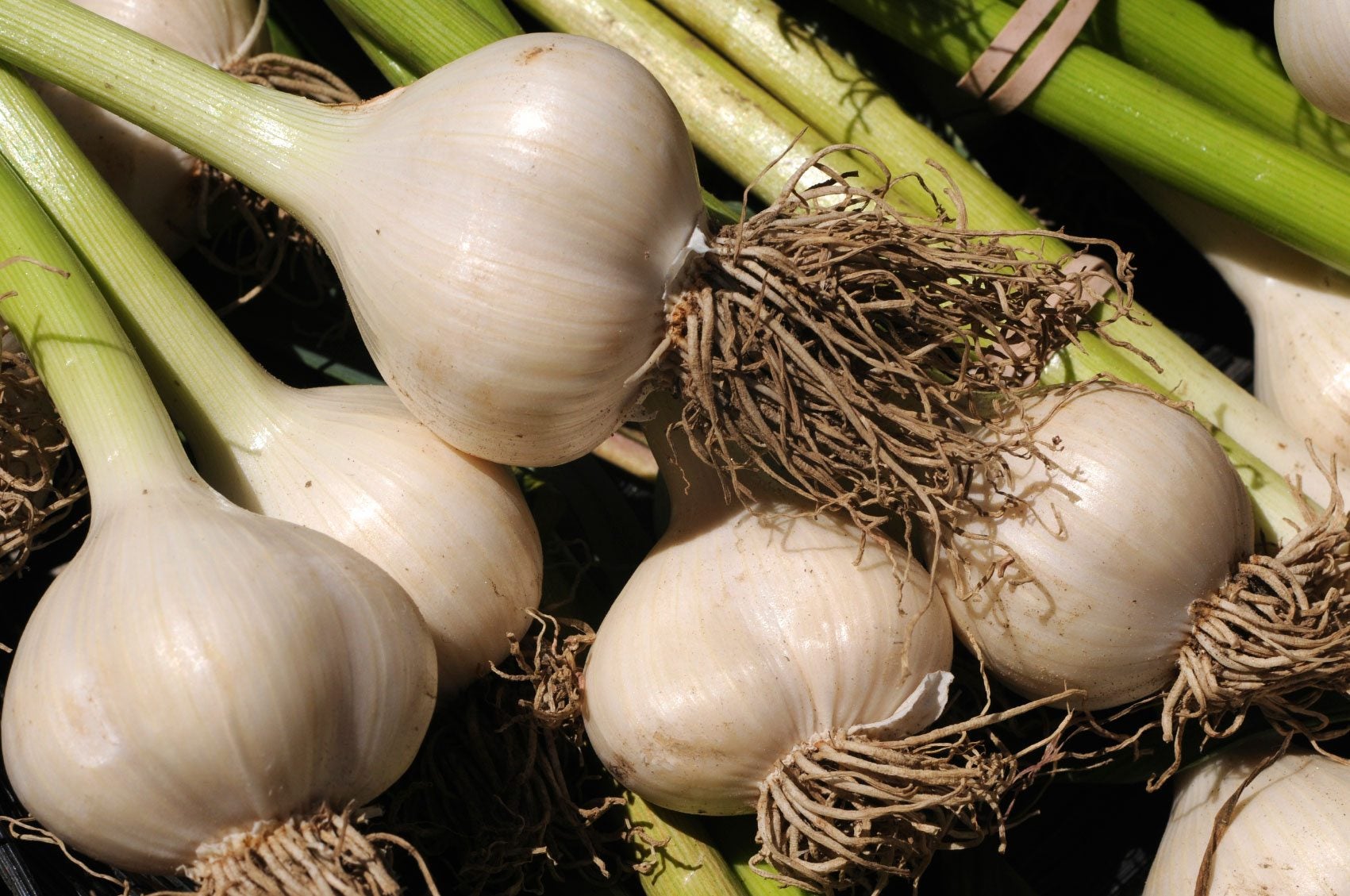Different Types Of Garlic: Garlic Varieties To Grow In The Garden

Of late, there has been much in the news about the promising possibilities garlic may have in reducing and maintaining a healthy level of cholesterol. What is known for sure, garlic is a terrific source of Vitamins A and C, potassium, phosphorus, selenium and a few amino acids. Not only nutritious, it's delicious! But have you ever wondered about the different types of garlic plants you can grow? Find out in this article.
Garlic Varieties to Grow
Garlic's history is long and convoluted. Originally from Central Asia, it has been cultivated in the Mediterranean for over 5,000 years. Gladiators ate garlic prior to battle and Egyptian slaves purportedly consumed it to give them strength to build the pyramids. There are basically two different types of garlic, although some folks lump elephant garlic as a third.
Elephant garlic is actually a member of the onion family but is a variant of the leek. It has very large bulbs with very few cloves, three or four, and has a sweet, mellow onion/garlic flavor and a similar mien, hence the confusion. Garlic is one of 700 species in the Allium or onion family. The two different types of garlic are softneck (Allium sativum) and hardneck (Allium ophioscorodon), sometimes referred to as stiffneck.
Softneck Garlic
Of the softnecked variety, there are two common garlic types: artichoke and silverskin. Both of these common garlic types are sold in the supermarket and you have more than likely used them.
Artichokes are named for their resemblance to artichoke vegetables, with multiple overlapping layers containing up to 20 cloves. They are white to off-white with a thick, hard-to-peel outer layer. The beauty of this is their long shelf life -- up to eight months. Some artichoke garlic varieties include:
- 'Applegate'
- 'California Early'
- 'California Late'
- 'Polish Red'
- 'Red Toch'
- 'Early Red Italian'
- 'Galiano'
- 'Italian Purple'
- 'Lorz Italian'
- 'Inchelium Red'
- 'Italian Late'
Silverskins are high yielding, adaptable to many climates and are the type of garlic used in garlic braids. Garlic plant varieties for silverskins include:
- ‘Polish White'
- ‘Chet's Italian Red'
- ‘Kettle River Giant.'
Hardneck Garlic
The most common type of hardneck garlic is ‘Rocambole,' which has large cloves that are easy to peel and have a more intense flavor than softnecks. The easy-to-peel, loose skin lessens the shelf life to only around four to five months. Unlike softneck garlic, hardnecks send out a flowering stem, or scape, that turns woody. Hardneck garlic varieties to grow include:
Sign up for the Gardening Know How newsletter today and receive a free copy of our e-book "How to Grow Delicious Tomatoes".
- ‘Chesnok Red'
- ‘German White'
- ‘Polish Hardneck'
- ‘Persian Star'
- ‘Purple Stripe'
- ‘Porcelain'
Garlic names tend to be all over the map. This is because much of the seed stock has been developed by private individuals who can name the strain anything they desire. Therefore, some garlic plant varieties may be very much the same despite different names, and some with the same name may be very different from each other indeed. “True” garlic plant varieties do not exist, hence, they are referred to as strains. You very well may want to experiment with different types until you find the ones you prefer and that do well in your climate.

Amy Grant has been gardening for 30 years and writing for 15. A professional chef and caterer, Amy's area of expertise is culinary gardening.
